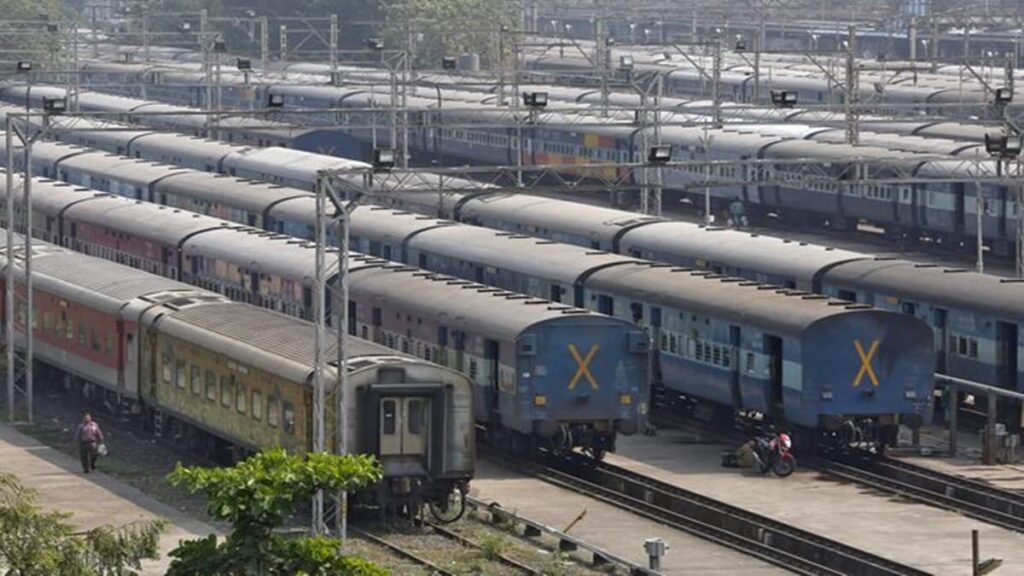NEW DELHI: Indian Railways’ freight receipts lagged the rate of expansion of the nominal gross domestic product (GDP) in recent years, reflecting the lack of recovery in the operational parameters of the transporter. Freight receipts grew 4% in FY24 and 7% in FY25, and are projected to grow at 4% in FY26, according to the figures revealed in the recent Union Budget. Nominal GDP grew by 9.7% in FY25 and the budget estimates (BE) for FY 26 is 10.1%.
After the pandemic-induced slump, IR’s passenger revenues recovered significantly, and are marginally outpacing GDP. But the growth is still not sharp enough to meaningfully reduce the cross subsidy of passenger segment by freight. While the goal is acquire freight traffic volumes from the roads segment by keeping freight rates regulated, there has only been modest improvement in this regard. Freight loading from IR grew just 2.95% in FY25 and is seen to rise by 3.97% in FY26.
The operating ratio is thus pegged perilously close to 100% all through these years (see chart). If the under-funding of key funds like one to address depreciation are to be taken into consideration, it is clear the transporter makes little operational surplus. To be sure, stricter accounting could have even showed it running deficits.
The situation is compounded by the fact that its capex pace has slowed (the Budget estimates for FY26 at Rs 2.55 lakh crore is the same as the revised estimates for FY25). With a virtual freeze on fresh borrowings, the capex is heavily dependent on the taxpayers’ money from the Union Budget. Unless operational revenues accelerate, IR’s expansion plans could be hit.
Experts said that freight rates are being deliberately kept low to compete with other logistics channels such as road and inland waterways. Transporting goods via rail is cheaper than roads but trucks are giving a tough fight to railways by offering flexibility and last-mile connectivity. As per NITI Aayog, the freight movement via rail costs Rs 1.36 per tonne per km as compared to Rs 2.5 per tonne per km for roads.
In November 2024, railway minister Ashwini Vaishnaw announced that the share of railways has risen to 29% in the total logistics pie. However, the transporter is targetting to achieve 35% share over the next six years in order to cut logistics costs and keep the inflation under check.
Even though the budget documents show that the railways is expecting a modest 4% increase in freight receipts in FY26, experts said that once the western dedicated freight corridor becomes operational — as expected by end of calendar year 2025 — the freight traffic and receipts could witness a major boost.
Experts said that the railways has drawn up aggressive plans to ramp up the premium passenger services over the next few years, which is going to further boost the revenue growth in the passenger segment in FY26. Even though the railways is estimating the passenger traffic to grow at a modest rate of around 4% in FY26, the revenue from this segment is likely to grow much faster in the period, according to some
“As on 5 January, around Rs 40,400 crore was spent on rolling stocks which is 79% of the budgetary allocation for rolling stock in FY25. We expect the pace of activity to pick up in FY26, with various projects being fast tracked and many new initiatives underway to improve the railway experience for customers,” said a recent report from Elara Capital.
“The line up of premium trains which the railways is planning to roll out in the next financial year is impressive. Around 210 Vande Bharat sleeper trains have been ordered out till date. The first prototype has competed trial runs at 180 kmph and is expected to be launched in the first quarter of FY26. Similarly, 4 rakes of Vande Bharat chair car 2.0 is expected to rolled out before the end of this fiscal,” said an analyst.
The transporter is burdened with a lot of legacy expenditure items which is affecting its overall performance. For instance, it spent 24% (or Rs 66,359 crore) of its revenue expenditure towards pension fund in FY25. In fact, the annual contribution towards pension fund is almost equal to the spending on maintenance and repairs of safety systems.
In 2023, the standing committee on railways highlighted that the higher appropriation to the pension fund is primarily meant to fulfill the social service obligations of the railways which is impacting the operating ratio adversely.
Source: The Financial Express

 Government Saves Rs 75,000 Crore In Interest Cost In 5 Years Through FY24
Government Saves Rs 75,000 Crore In Interest Cost In 5 Years Through FY24 